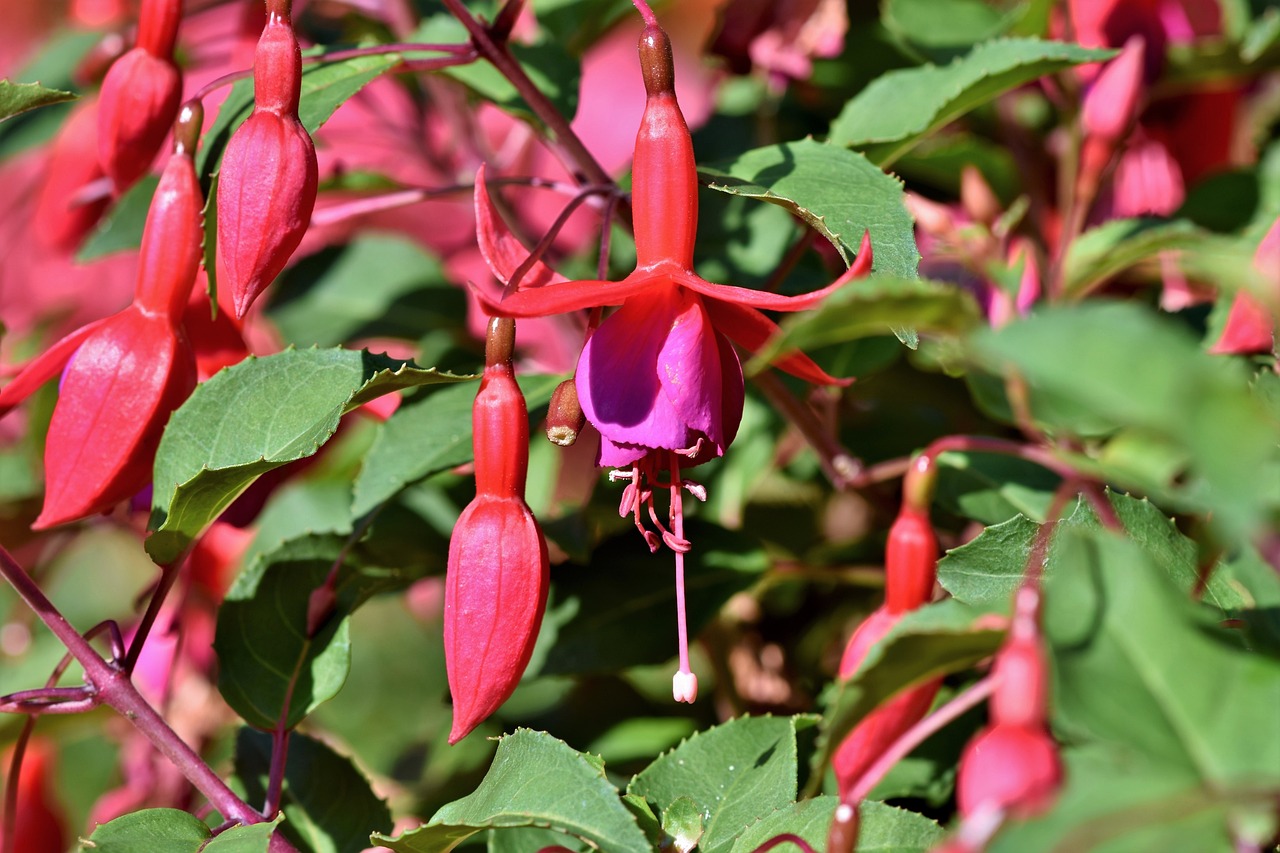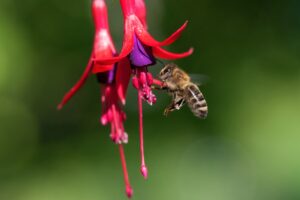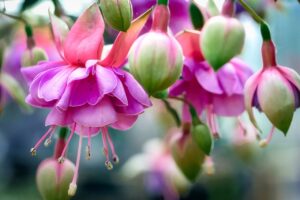Fuchsia
Overview
The Fuchsia plant, notable for its vibrant, teardrop-shaped blossoms, is a popular choice for gardeners seeking to add a splash of color to shaded areas. Native to the Andes, this versatile plant is celebrated for its straightforward care, ability to flourish in cooler, moist conditions, and striking presence in containers and hanging baskets.

Characteristics
Known for its vibrant teardrop-shaped flowers, shade-loving nature, and popularity in hanging baskets and cool climates.
Region
The Fuchsia plant is usually found or grown in Central and South America, particularly in the Andes region, and is cultivated globally in similar cool and shady conditions.
Natural Habitat
Fuchsia plants are typically found in the wild in forested areas and mountainous regions.
Cultivation
Thrives in partial to full shade, prefers consistently moist soil, and requires well-draining, fertile soil with a pH of 6-7.
Uses and Benefits
The Fuchsia plant offers a myriad of uses and benefits, primarily celebrated for its ornamental value:
- Striking ornamental appeal with vibrant, teardrop-shaped flowers enhancing gardens, patios, or balconies.
- Versatile applications in containers, vertical gardens, and hanging baskets, offering dynamic decorating possibilities.
- Resilient in shady spots where other plants may fail to thrive, making it ideal for varied garden situations.
- Continuous blooming from spring to fall, providing long-lasting color and interest in the garden.
Additionally, Fuchsia is relatively low maintenance, demanding regular but straightforward care to produce its signature blooms, making it a favored choice among both new and experienced gardeners2 3.

Cultivation Tips
To achieve the best results when cultivating Fuchsia, consider these key tips:
- Light: Fuchsias flourish in partial shade to full shade. Avoid placing them in direct sunlight to prevent scorching.
- Soil type: Use a well-draining soil mix, rich in organic matter to ensure the roots remain moist but not waterlogged.
- Watering: Keep the soil consistently moist, but ensure good drainage to prevent root rot. Watering is particularly crucial during dry periods.
- Temperature: These plants prefer cooler conditions and might need protection from extreme heat.
- Feeding: Apply a balanced liquid fertilizer every few weeks during the growing season to support their flowering.
Remember to deadhead spent blooms to encourage continuous flowering and be aware of their reduced tolerance to very hot and dry conditions. Regular attention to these aspects will reward you with a bountiful display of Fuchsia blooms from spring through fall5 3.
Seasonal Considerations
Seasonal considerations are key when dealing with the captivating Fuchsia. To maintain its lush vibrancy and ensure a stunning display of blooms, it’s important to understand the plant’s cycle and the care it requires throughout different times of the year:
- Spring: When the risk of frost has passed, it’s time to plant or move your Fuchsia outdoors.
- Summer: This is the peak blooming period for Fuchsia. Ensure it has ample shade to protect it from bright, hot sunlight.
- Autumn: As cooler weather approaches, lessen watering and prepare the plant for overwintering indoors if you live in a cold climate.
- Winter: If your Fuchsia is in a pot, bring it inside to avoid frost damage. In milder regions, mulch around the base to protect root systems.
Careful attention during these seasonal transitions will help your Fuchsia thrive and grace your garden with its dance-like blooms2 4.

Issues and Troubleshooting
Fuchsias may encounter a few common challenges when grown outside their ideal conditions. Without enough shade, these plants can wither in too much sun. Overwatering or poor drainage leads to root rot, while under-watering causes wilting and leaf drop. Pests such as whiteflies, spider mites, and aphids pose additional threats, thriving in the warm, dry conditions adverse to Fuchsia health.
Strong prevention includes:
- Shade: Position Fuchsias in a partially shaded area to mimic their native habitat.
- Watering: Monitor soil moisture closely; it should be damp but not soggy.
- Pest Control: Keep an eye out for pests and treat them promptly with insecticidal soap or neem oil.
Ensuring ideal growing conditions can help avoid these issues and maintain healthy, vibrant Fuchsias.
History and Folklore
Fuchsia, named for the 16th-century botanist Leonard Fuchs, carries a rich history tied to its native Andes in Central and South America. The plant’s bright, pendulous flowers might have enchanted local inhabitants long before it captivated European horticulturists. While specific tales and legends are not widely documented, the alluring beauty of fuchsia flowers suggests they may well have featured in indigenous folklore, symbolizing aspects of life and nature. This intercontinental journey from South American mountains to European gardens underscores a botanical fascination that has persisted for centuries5.
References
1. Gardener’s Path. (n.d.). “How to Grow and Care for Fuchsia Flowers.” https://gardenerspath.com/plants/flowers/grow-fuchsia/
2. GardenBeast. (n.d.). “Fuchsias Guide: How to Grow & Care for Fuchsia Plants.” https://gardenbeast.com/fuchsia-guide/
3. Gardenia. (n.d.). “Fuchsia: How to Grow and Care with Success.” https://www.gardenia.net/guide/fuchsia-plant-care-and-growing-guide
4. The Spruce. (n.d.). “How to Grow and Care for Fuchsia.” https://www.thespruce.com/fuchsia-great-container-plant-for-shade-847937
5. Gardening Know How. (n.d.). “Fuchsia Plant Care: How To Grow Fuchsia Flowers.” https://www.gardeningknowhow.com/ornamental/flowers/fuchsia/growing-fuchsia-flower.htm
Image Credit: Ralphs_Fotos
Image Credit: Andhoj
Image Credit: fietzfotos
Nicolas Duval
Nicolas is a passionate advocate for nature and the art of wildcrafting. His dedication shines through in Wildcraftia, a website he meticulously crafted to serve as a haven for nature enthusiasts worldwide. Driven by a deep appreciation for nature’s connection to humanity, Nicolas embarked on his journey in 2011 with SmokableHerbs, a platform showcasing his love for nature’s bounty. Building upon this foundation, he established Smokably, a thriving online store offering premium herbs and blends to a global audience.
